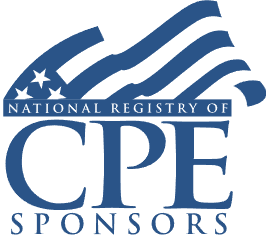Donor Advised Funds and NPOs: Supporting Organizations, Recognizing and Recording Contributions
TBD

Course Details
- smart_display Format
On-Demand
- signal_cellular_alt Difficulty Level
Intermediate
- work Practice Area
Accounting
- event Date
Wednesday, October 2, 2019
- schedule Time
1:00 PM E.T.
- timer Program Length
110 minutes
-
BARBRI is a NASBA CPE sponsor and this 110-minute webinar is accredited for 2.0 CPE credits.
-
BARBRI is an IRS-approved continuing education provider offering certified courses for Enrolled Agents (EA) and Tax Return Preparers (RTRP).
-
Live Online
On Demand
This course will guide advisers to nonprofit organizations on interacting with donor-advised funds (DAFs). The panel will discuss the types of sponsoring organizations, how donations are reported and solicited, pledges from DAFs, and the downsides of these funds so that practitioners and advisers can assist nonprofits in maximizing the benefits of these charitable instruments.
Description
The growth of DAFs and contributions to these funds has been remarkable. The estimated value of assets held in these accounts was $85 billion at the end of 2016. Use of DAFs is so compelling that sponsoring organizations have been established to facilitate acceptance of contributions from these funds. Fidelity Charitable is the largest DAF in the U.S, with over $5.2 billion in donations in 2018.
These vehicles, popular among taxpayers, provide a simple way to control charitable deductions. DAFs can accept cash and non-cash contributions, allow taxpayers the flexibility to contribute and take substantial tax-deductions when needed while deferring the actual distribution of funds to the charity over many years. This delay of the funded contribution sometimes leads to accusations of hoarding.
Questions surround best practices for soliciting funds using DAFs. Establishing a 509(a)(3) supporting organization can relieve the nonprofit from the burden of fundraising. At the same time, they can become a burden if not governed properly, and for small NPOs, may not be a viable alternative.
Understanding DAFs is crucial for practitioners and advisers of nonprofit organizations. Listen as our experts discuss establishing a DAF, proper reporting of DAF receipts, types of sponsoring organizations, and the burdens of DAFs.
Outline
- What is a DAF
- Types of sponsoring organizations
- Reporting donations from DAFs
- Soliciting donations
- Pledges
- Downsides
Benefits
The panel will review these and other high priority issues:
- What is a DAF?
- How should a nonprofit organization report DAF receipts?
- What are the types of sponsoring organizations and considerations of each?
- What are the downsides of establishing a DAF?
NASBA Details
Learning Objectives
After completing this course, you will be able to:
- Identify sponsoring organizations
- Determine if a DAF may benefit a nonprofit organization
- Recognize the pitfalls of establishing a DAF
- Ascertain best contribution reporting practices
- Field of Study: Taxes
- Level of Knowledge: Intermediate
- Advance Preparation: None
- Teaching Method: Seminar/Lecture
- Delivery Method: Group-Internet (via computer)
- Attendance Monitoring Method: Attendance is monitored electronically via a participant's PIN and through a series of attendance verification prompts displayed throughout the program
- Prerequisite: Three years+ business or public firm experience preparing complex tax forms and schedules, supervising other preparers or accountants. Specific knowledge and understanding of pass-through taxation, including taxation of partnerships, S corporations and sole proprietorships, qualified business income, net operating losses and loss limitations; familiarity with net operating loss carry-backs, carry-forwards and carried interests.

Strafford Publications, Inc. is registered with the National Association of State Boards of Accountancy (NASBA) as a sponsor of continuing professional education on the National Registry of CPE Sponsors. State boards of Accountancy have final authority on the acceptance of individual courses for CPE Credits. Complaints regarding registered sponsons may be submitted to NASBA through its website: www.nasbaregistry.org.

Strafford is an IRS-approved continuing education provider offering certified courses for Enrolled Agents (EA) and Tax Return Preparers (RTRP).
Unlimited access to premium CLE courses:
- Annual access
- Available live and on-demand
- Best for attorneys and legal professionals
Unlimited access to premium CPE courses.:
- Annual access
- Available live and on-demand
- Best for CPAs and tax professionals
Unlimited access to premium CLE, CPE, Professional Skills and Practice-Ready courses.:
- Annual access
- Available live and on-demand
- Best for legal, accounting, and tax professionals
Unlimited access to Professional Skills and Practice-Ready courses:
- Annual access
- Available on-demand
- Best for new attorneys
Related Courses
Recommended Resources
Gain a Competitive Edge Through Efficient CPE Strategies
- Learning & Development
- Business & Professional Skills
- Career Advancement
